Mental illness, including depression and anxiety disorders, affects one out of every five adults in the U.S. But some people have problems accessing care, including not being able to find a practitioner nearby or fearing the stigma that comes from seeking help. And patients with disorders like agoraphobia literally can’t leave their homes for appointments.
In these cases, telepsychiatry can be critical for treatment. Telepsychiatry is the process of providing mental health services, including counseling and psychiatric treatment, over the phone or, increasingly, through video conferencing services.
Just so you know
You’ve got your medical toolkit ready to help those in need — but what about your telemedicine toolkit? With Jotform’s HIPAA-friendly telehealth platform, you can easily create online medical forms that keep sensitive health data safe.
Well before the coronavirus pandemic, the American Psychiatric Association (APA) accepted telepsychiatry as a viable method for treating patients, as long as it’s used to benefit patients; protect patient autonomy, confidentiality, and privacy; and complies with APA ethics and applicable laws.
While every state has its own laws on how telepsychiatry can be conducted, most of them group mental health professionals under the larger telemedicine category. Currently, 16 states require that telemedicine services be provided with synchronous (real-time) technology, like video conferencing.
Other states have expanded their laws regarding who can provide telepsychiatry services. For example, New York recently updated its regulations to allow mental health care providers licensed under Article 163 of the State Education Law to use telehealth services to treat patients.
Using telehealth to provide mental health care
Telepsychiatry extends beyond just prescribing and monitoring medication. Therapists, licensed social workers, psychologists, and other mental health professionals can all provide telehealth services to their patients.
There are a few main ways telepsychiatry is used:
- To conduct individual counseling appointments
- To provide marriage and family therapy sessions
- To monitor ongoing conditions that require medication
For example, a psychiatrist treating a patient for depression might set up telemedicine visits with the patient to follow up with them regarding their medication.
The benefits of telepsychiatry
As mentioned above, traveling to a mental health provider’s office can be why people don’t get the help they need. More than half (55 percent) of U.S. counties don’t have a psychiatrist.
For patients with limited access to transportation, telepsychiatry can be an important part of treatment. Even for those patients who can travel to an appointment, limited time may make it difficult for them. Telepsychiatry removes the barrier related to transportation, and it can improve access to care for patients with disorders that prevent them from leaving their homes.
Additionally, telepsychiatry expands the pool of providers patients can choose from so that they can find someone who specializes in their diagnosis or a particular type of treatment.
For example, some patients with major depression or bipolar disorder respond well to dialectical behavior therapy (DBT), but they may not be able to find someone in their area who has experience with it. Telehealth appointments can connect them with a therapist who has a DBT background.
Even more important, approximately half of the children in the U.S. who have mental health issues aren’t able to receive treatment, usually because there isn’t a provider nearby who specializes in child mental health. Telemedicine can help pediatricians connect their patients to someone who can provide much-needed care and help inform the patient’s treatment.
In states with child psychiatric telephone access programs, 12.3 percent of children receive the care they need, as opposed to states with partial programs (10.9 percent) and no programs (9.5 percent).
Improving patient outcomes and satisfaction
Research has found that using telepsychiatry has been effective in treating patients with panic disorders, depression, and post-traumatic stress disorder, among other conditions. Even before the use of video conferencing became widespread, patients who were being treated for depression with telemedicine methods had nearly the same response rate to treatment as an in-person group.
For practitioners who worry that their patients won’t like being treated remotely, studies have found that some patients may actually prefer telemedicine appointments.
With technology being as easy to use as it is today, even senior citizens are able to use telepsychiatry for their care. A study found that 80 percent of older patients were able to use video chat for their appointments, and 90 percent were comfortable sharing sensitive information during these virtual visits.
When not to use telepsychiatry
There are times when telepsychiatry may not be a good fit for a patient. For example, if a psychiatrist is seeing a patient for the first time to evaluate whether or not they need medication, an in-person visit may be more appropriate so that they can pick up on the nuances of a patient’s behavior.
Telemedicine may also not be appropriate for patients who have difficulty complying with their existing treatment plan or who tend to be less than honest about how their treatment is going. For example, a patient with a history of substance abuse who engages in drug-seeking behavior may need to be seen in person so that the provider can evaluate whether they actually need medication.
Just so you know
If your organization is fighting against COVID-19, you can apply for a free, unlimited, HIPAA-friendly Jotform account with our Coronavirus Responder Program.
There are also very strict laws regarding how controlled substances, like some medications used to treat anxiety, can be prescribed. The Ryan Haight Online Consumer Protection Act of 2008 was amended to specifically require that any provider prescribing controlled substances conduct an in-person evaluation of the patient.
Finally, there will always be patients who prefer an in-person visit to a virtual visit. Telepsychiatry won’t change that. However, it can serve as a way for providers to augment what they’re already doing for patients or to reach patients who can’t come into their offices.




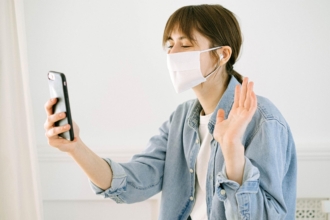
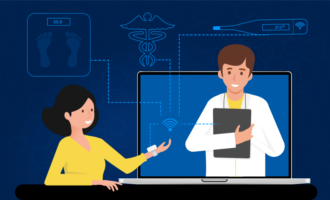








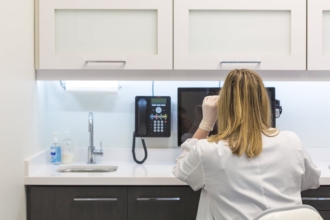
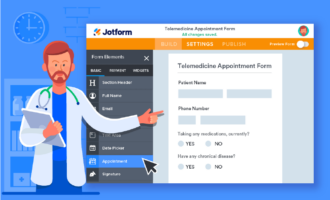
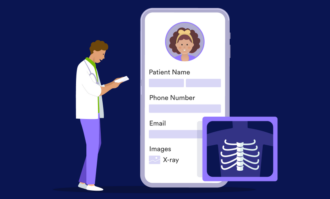














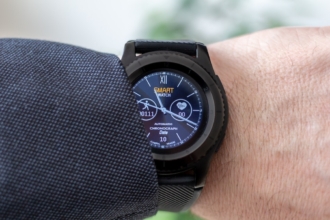




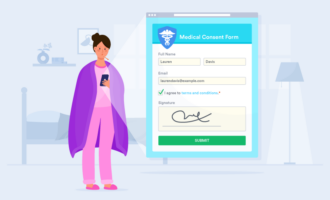


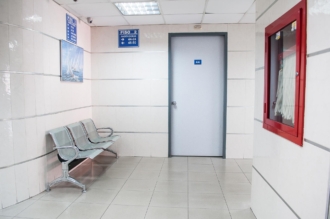

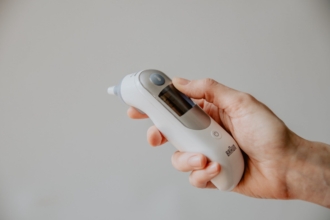


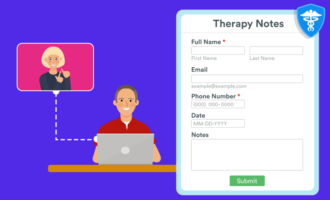



Send Comment: